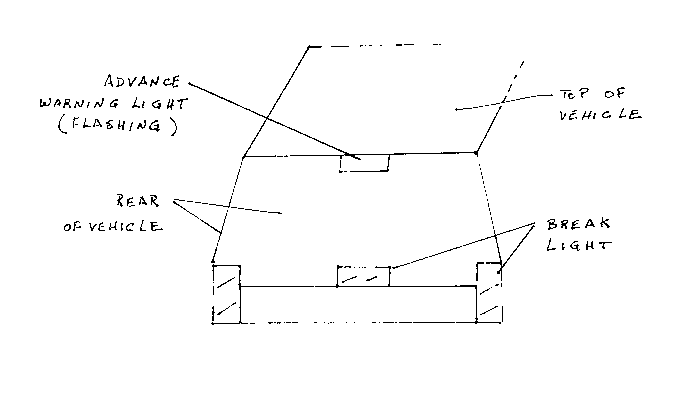Some of the information on this Web page has been provided by external sources. The Government of Canada is not responsible for the accuracy, reliability or currency of the information supplied by external sources. Users wishing to rely upon this information should consult directly with the source of the information. Content provided by external sources is not subject to official languages, privacy and accessibility requirements.
Any discrepancies in the text and image of the Claims and Abstract are due to differing posting times. Text of the Claims and Abstract are posted:
| (12) Patent Application: | (11) CA 2139892 |
|---|---|
| (54) English Title: | ADVANCED WARNING LIGHT |
| (54) French Title: | FEU D'AVERTISSEMENT ARRIERE |
| Status: | Deemed Abandoned and Beyond the Period of Reinstatement - Pending Response to Notice of Disregarded Communication |
| (51) International Patent Classification (IPC): |
|
|---|---|
| (72) Inventors : |
|
| (73) Owners : |
|
| (71) Applicants : | |
| (74) Agent: | |
| (74) Associate agent: | |
| (45) Issued: | |
| (22) Filed Date: | 1995-03-06 |
| (41) Open to Public Inspection: | 1996-09-07 |
| Availability of licence: | N/A |
| Dedicated to the Public: | N/A |
| (25) Language of filing: | English |
| Patent Cooperation Treaty (PCT): | No |
|---|
| (30) Application Priority Data: | None |
|---|
It is a safety feature light to be fitted to the rear window
or rear area of any motorised vehicle. This safety feature
light will be a white light of low intensity. This light
is activated manually when the driver presses the connected
button conveniently located on the dashboard of the vehicle.
By pressing this button the safety light will flash for about
three to five seconds. The flashing light will indicate to
the driver immediately behind to take caution: e.g high-beam
interference from his vehicle, hazardous road conditions
ahead or pedestrian ahead crossing at cross-walk. The
intention of this safety feature light (or Advance Warning
Light) is to provide an extra road safety feature on
motorised vehicles, thereby allowing drivers to take extra
pre-cautionary measures and reduce accidents.
Note: Claims are shown in the official language in which they were submitted.
Note: Descriptions are shown in the official language in which they were submitted.

2024-08-01:As part of the Next Generation Patents (NGP) transition, the Canadian Patents Database (CPD) now contains a more detailed Event History, which replicates the Event Log of our new back-office solution.
Please note that "Inactive:" events refers to events no longer in use in our new back-office solution.
For a clearer understanding of the status of the application/patent presented on this page, the site Disclaimer , as well as the definitions for Patent , Event History , Maintenance Fee and Payment History should be consulted.
| Description | Date |
|---|---|
| Time Limit for Reversal Expired | 1998-03-06 |
| Application Not Reinstated by Deadline | 1998-03-06 |
| Deemed Abandoned - Failure to Respond to Maintenance Fee Notice | 1997-03-06 |
| Application Published (Open to Public Inspection) | 1996-09-07 |
| Abandonment Date | Reason | Reinstatement Date |
|---|---|---|
| 1997-03-06 |
Note: Records showing the ownership history in alphabetical order.
| Current Owners on Record |
|---|
| PETER JESHI TIJIRI |
| Past Owners on Record |
|---|
| None |